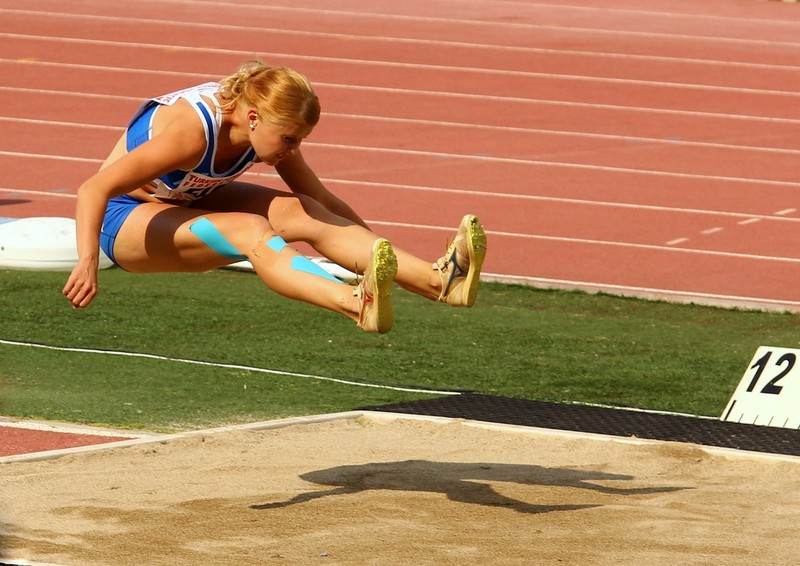
The long jumping sport, summarized as "running fast and falling to the farthest point," is one of the sports made in ancient times.
The one-jump contest with different rules in the Ancient Greek Olympics was a long jump. The long jump, one of the modern olympic sports of today, was also inspired by antiquity. The jumpers struggle to fall to the farthest point in a 10-meter-long sandbox, accelerating at a distance of 30-45 meters and bouncing on a thirty-centimeter-wide board. The longer it is in the air, the longer it will be. A sprout for the athlete where speed, agility and power are important. All-time long jump record, an American athlete with a 8.95 meter jump. You can find what you want to know about this sport in our article.
What is a Long Jump?
"Long jump", or "single jump", is the runway and field which is based on reaching the longest distance in a single jump. It runs at a distance of 45 meters and accelerates and jumps to the sandy pool without crossing the designated area. Athletes in this sport; fast running, short running (sprint) and high jump techniques. Foot and calf strengthening exercises and gymnastics movements are prepared for the jump.
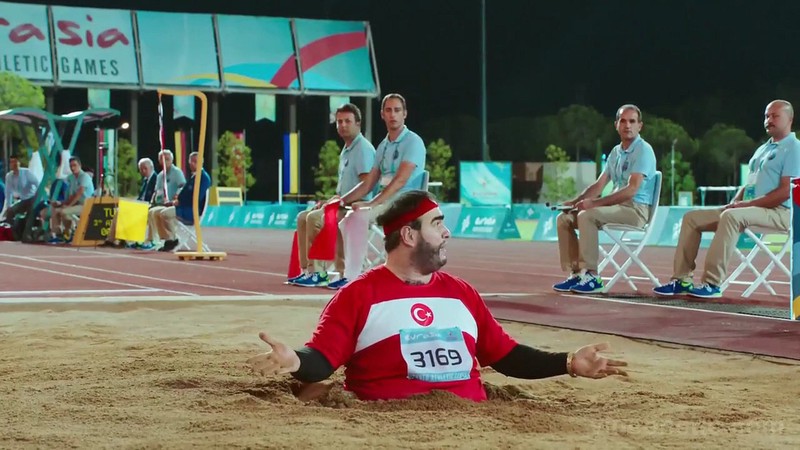
Long jump is a more technical sport than other Olympic sports. Athlete for jumping; arms, legs and body positions. For best results it is important to achieve the highest speed. The maximum speed is achieved using the entire runway or 40 meters. The running speed is influenced by the moment you step on the board, the distance to jump and flight. Hand and arm positions and body angle when the air is in the air, end effect taken.
What are the rules?
Long jump equipment; jogging shoes and plastic studs. The legs begin running with a light running jogging contiguous. It is important that the final speed is reached when the press board is approached and that the board is well pressed. Following the splash, the knees are pulled under the arms and the flight is done. Then the balance is provided on the feet and falls down.
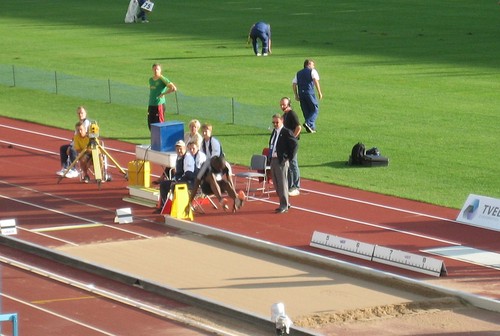
The sand in the jumping pool at least 1 meter from the jumping area and runway is humidified before the competition. The jumping board is buried in the ground at the same level as the jogging. The front of the jumping board is also furnished with paste or white powder for the identification of step errors.
Long athlete athletes have the right to try six. If the jumper passes the footboard, this test is inimitable and the referee declares that the jump is invalid by raising the flag.
The measurement is based on the distance between the launch pad and the nearest track in the attic sandpit. In other words; the athletes with the distance of the feet in the sand are measured based on the point of leaving the pool. The measured length is written down to the nearest centimeter below.
The athletes participate in 3-jumping qualifying rounds at international competitions. Eight athletes, who make the best grade, get 3 more jumps. These jumps are the final jumps and the athlete who makes the best grade becomes the champion of the competition.
Judges; to observe mistakes, to mark the jump, to measure the jump, and to collect the competitors. The number of referees varies according to the competition.
Some important points about the long jump are;
The base of a long jump shoe can be up to 13 millimeters thick.
The runway must be at least 40 meters long and at least 120 centimeters wide.
The press pad for splashing must be 122 centimeters long, 30 centimeters wide and in the same level as the floor.
The 20 cm white area of the board is the press area. The 10 centimeter area is red, and pressing the red field means "foul".
The white tigers on the jumping peg should not touch the feet of athletes.
The sand pool must be 2.75 to 3 meters wide, 10 meters long.
The jumper must complete the jump within 1 minute from the moment the jumper is stepped on the runway.
The sand pool should be skipped in one step.
Historical
The long jump sport in Olympic competitions has been held in men's category since 1896 and in women's category since 1948. However, its history dates back to the Olympic Games held during the Ancient Greek era.
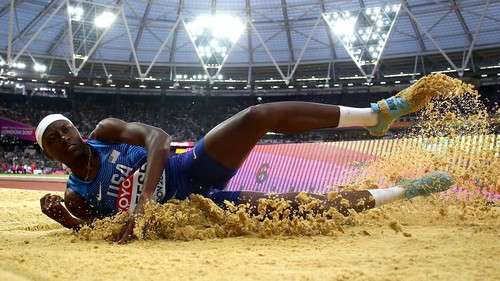
The long jump, which was the only one-time jump event in antiquity, was also a pillar of the pentathlon races. Athletes were exhibiting their abilities in these games. It is estimated that the long jump in this respect has emerged as a sport reflecting the skips to cross the obstacles or skirmishes in front of the soldiers during the war.
The long jumping practice in modern Olympics also started with the examination of ancient Olympics. Athletes who jumped from a short distance in the first Olympic Games carried weightlifting weight of 1 to 5 kilograms in their hands. Athletes jumped by throwing their weight away from their hands to gain speed. The logic of the jump was determined to "accelerate". That is, when the weights were thrown backwards, the center of gravity of the athletes was changing, and the athlete could stretch his legs outward and increase the distance. Athletes were jumping into a dug land, called "skamma", that had no sand.
In the time of Philostratus, one of the four philosophers who lived during the Roman Empire, the long jumping sport was made in the music accompaniment by using pipes to add a rhythm to the movements of the weightlifters. Philostratos, "Rules, competition is considered to be the most difficult because of the flute and weight is aimed at providing competitors with advantages." He said. The Spartan Chionis, who jumped 7.05 meters in the games of 656 BC, was considered to be the most important long jumper of his time.
The long jump is a sprout made in modern summer olympics since 1896. In 1914 a standardized jumping board was developed specifically for women; but until the Olympics in 1948, ladies did not make long jump competitions.
Long Jump Records
American Mike Powel broke the world men's long jump record with an 8.95 meter jump in the World Athletics Competition held on August 30, 1991 in Japan's capital city, Tokyo. This record is still a record of all time (2018).
Although Powell's record was officially broken, these long jumps were not counted because of the rule that "the speed of the wind affected it".
This record belonged to the American athlete Bob Beamona 23 years ago. Beamona, who made the 8.90-meter jump at the Mexico City Olympics in 1968, held 23-year "all-time long jump record" until Powel's record.
American athlete Jesse Owens is considered one of the most important names in long jump sports. The record jump of 8.13 meters in 1935 at the National Athletics Championship could not be over for 25 years.
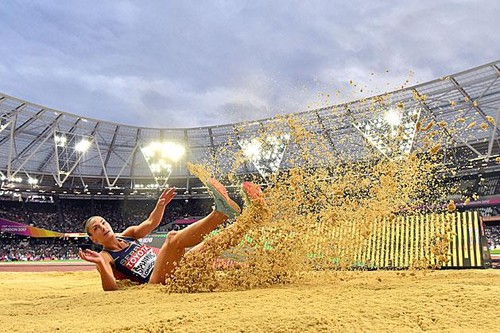
In 1960, American athlete Ralph Boston made an 8.12 meter jump at the Roman Olympics, catching Jesse Owens's record at 1 millimeter.
Soviet Union sportsman Galina Chistyokova broke the world women's long jump record with a 7.52 meter jump in the athletics competition held in Leningrad on June 11, Chistyokova still keeps the long jump record of all time in ladies.
In the history of Turkish athletics, Mesut Yavas is the first athlete who passed the 8 meter long jump. Slow, in 2000 in Ames, the state of Iowa, USA, made a jump of 8.09 meters in the saloon competitions. In the same year in competitions organized by the deficit in Istanbul Turkey broke records by jumping 8.08 meters.
The Best Long Jumps of All Time
Male and female athletes who make the best 10 jumps of all time are;
Men:
1- Mike Powell (USA): 8.95 meters - August 30, 1991 - Tokyo
2- Bob Beamon (USA): 8.90 meters - October 18, 1968 - Mexico City
3- Carl Lewis (USA): 8,87 meters - August 30, 1991 - Tokyo
4- Robert Emmiyan (Armenia): 8.86 meters - May 22, 1987 - Tsakhkadzor
5- Larry Myricks (USA): 8.74 meters - 18 July 1988 - Indianapolis
6- Erick Walder (USA): 8,74 meters - 2 April 1994 - El Paso
7- Dwight Phillips (USA): 8.74 meters - June 7, 2009 - Eugene
8 - Irving Saladino (Panama): 8,73 meters - May 24, 2008 - Hengelo
9- Iván Pedroso (Cuba): 8,71 meters - July 18, 1995 - Salamanca
10- Sebastian Bayer (Germany): 8,71 meters - 8 March 2009 - Torino
Women:
1- Galina Chistyakova (Soviet Union): 7,52 meters - June 11, 1988 - Leningrad
2- Jackie Joyner-Kersee (USA): 7.49 meters - May 22, 1994 - New York City
3- Heike Drechsler (Germany): 7,48 meters - July 9, 1988 - Neubrandenburg
4- Anişoara Çuşmir (Romania): 7,43 meters - June 4, 1983 - Bucharest
5- Tatyana Kotova (Russia): 7,42 meters 23 June 2002 - Annecy
6- Yelena Belevskaya (Soviet Union): 7.39 meters - July 18, 1987 - Bryansk
7- Inessa Kravets (Ukraine): 7.37 meters - June 13, 1992 - Kiev
8- Tatiana Lebedeva (Russia): 7,33 meters - July 31, 2004 - Tula
9- Olena Khlopotnova (Soviet Union): 7,31 meters - September 12, 1985 - Alma Ata
10 - Marion Jones (USA): 7.31 meters - August 12, 1998 - Zurich.

Comments